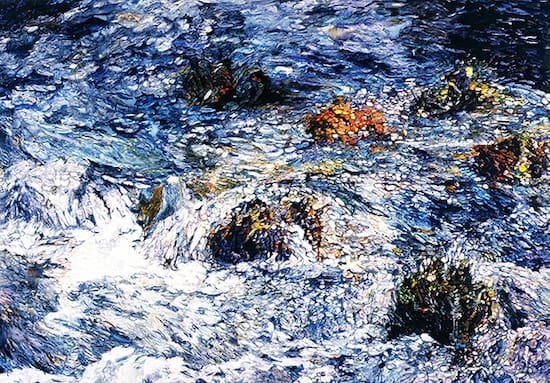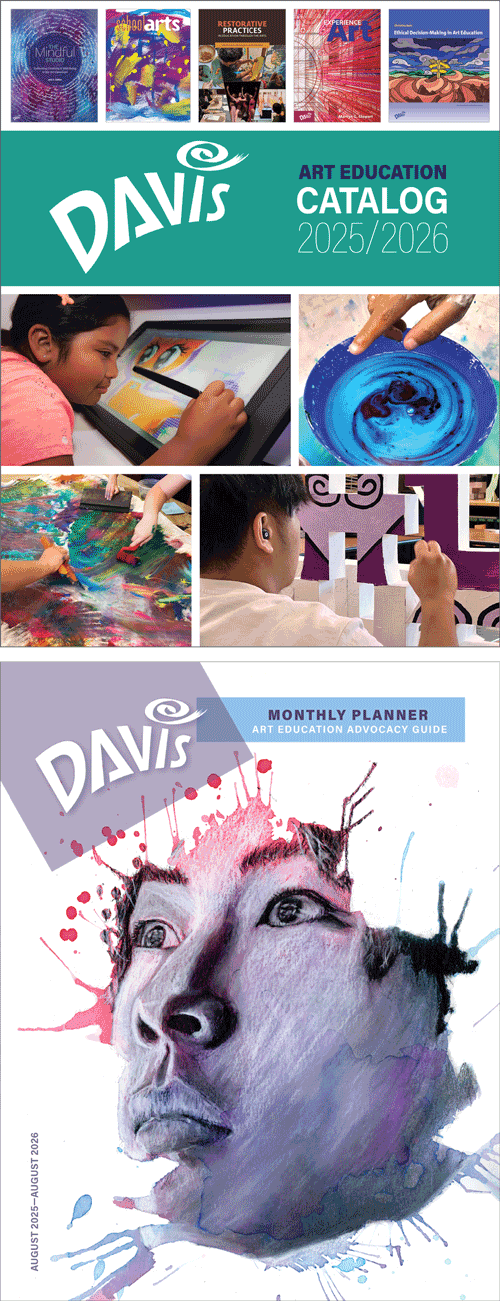A Consummate Realist: Joseph Raffael
Photorealism was a style that evolved during the 1960s in reaction to the prevalence of total abstraction seen in Abstract Expressionism, Color Field, and Minimalism—movements that dominated that period. Joseph Raffael was a member of the active group of New York artists who gravitated toward plain realism rather than symbolic or ironic realism like Pop Art and Conceptualism. He was a truly unique painter who combined the vigorous brushwork of Abstract Expressionism with strikingly realistic subject matter in monumental compositions.
 |
| Joseph Raffael (1933–2021, United States), Paper Mill, 1974. Oil on canvas, 6'9” x 10' (210.8 x 304.8 cm). Butler Institute of American Art, Youngstown, Ohio. © Artist or Estate of the Artist. (BIAA-179) |
Although Raffael’s paintings begin from photographs, in Paper Mill the image is changed to reveal more painterly effects. To achieve a translucent, glowing quality in his oil paintings, Raffael prepared the canvas with at least ten layers of gesso and mixed his paints with turpentine. Common in many of his works is the play of light, seen here in the facets of color on the shimmering surface of the water. These isolated areas of color placed one on top of the other also lend a heightened sense of movement to the painting.
Works such as Paper Mill started from a projected photograph that the artist analyzed into a grid of cells. He then filled each cell one at a time—much as Chuck Close (1940–2021) did—with saturated, pure watercolor. He often used as many as forty different hues in a single work. Because his works are so large, the latticework of color merges into an illusion of visual realism from several meters away. In the background of this work, Raffael displayed his penchant for imitating depth-of-field focus problems in the photographs he copied.
Throughout the history of art in the United States, there has been a visual fascination with material reality. The old love of realism in art was too deeply ingrained in the American public to completely die out even with the advent of Abstract Expressionism and Minimalism in the mid-1900s. From mid-century to the present, there have always been artists working with the recognizable figure.
The most famous of movements to return to figuration were Pop Art in the late 1950s and New (or, Photo) Realism of the 1960s. The movements themselves were a reaction to what was perceived as the domination of Abstract Expressionism in the art world in the United States. Since then, many artists continue to produce figurative work in a variety of styles. Photorealism was celebrated with a major exhibition, Sharp-Focus Realism, at the New York Sidney Janis Gallery in 1972. The show included traditional, non-abstract, and illusionistic work, many of which, like Richard Estes's (born 1932) work, resembled photographs.
Raffael began drawing at age seven and studied art through high school. He then studied at Cooper Union and Yale University. At Yale, he studied under geometric minimal abstractionist Josef Albers (1880–1976), who did not appreciate Raffael’s bent for realism. In the 1950s, Raffael worked as a freelance textile designer and then studied in Florence, where he began to produce complex watercolors of flowers.
Almost all of Raffael’s watercolors are gigantic in scale, reflecting the influence of the enveloping giant canvases of the Abstract Expressionists. His method always relied on the photograph. His early flower watercolors emphasized painterly surface rather than blunt realism. After 1976, he began to minimize the watercolor textures in favor of a more jewel-like, brilliant surface, almost like that of a shiny color photograph.
Correlations to Davis programs: Explorations in Art 2E Grade 3: p.31; Explorations in Art 2E Grade 5, 2.2; Explorations in Art 2E Grade 6: 1.8; Experience Painting: p. 120; Discovering Art History: 17.4

Comments